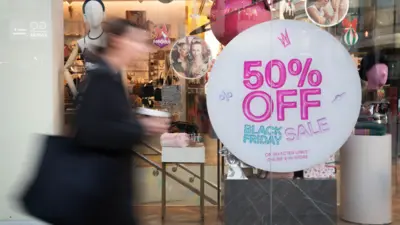We've updated our Privacy and Cookies Policy
We've made some important changes to our Privacy and Cookies Policy and we want you to know what this means for you and your data.
Record yellow diamond on show in Natural History Museum
- Author, Samantha Smith
- Role, Science reporter, ґуПуґ«ГЅ News
A bright yellow diamond weighing more than 110 carats has gone on display in London's Natural History Museum.
The Sun Drop, roughly the size of a woman's thumb, is one of the biggest of its type in the world.
It is on loan to the museum from diamond manufacturers Cora International.
Most diamonds are small and colourless - those in jewellery are typically less than five carats.
Colour in diamonds is caused by the presence of other substances or structural defects.
Tiny amounts of boron create a blue stone, while exposure to radiation at some point during formation will result in a green tint.
Pink diamonds are created by structural defects, while yellow diamonds are the result of traces of nitrogen in the carbon.
But strong colours are unusual, and larger stones with high levels of colour are especially rare.
Alan Hart, the Natural History Museum's minerals curator, told ґуПуґ«ГЅ News: "I've never seen a stone such as this."
"A one carat diamond is what most people are familiar with, and are really pleased to own. You can see how exceptional this diamond is."
Cora International chief executive Suzette Gomes told ґуПуґ«ГЅ News the cut was vital in bringing out a diamond's beauty.
"If the colour is weaker you would cut a square… to keep the colour and make it stronger. If your colour's very strong, you would cut a pear shape."
From finding a diamond in the rough to presenting a finished, polished, precious stone can take up to six months.
The stone is carefully analysed, as imperfections and inclusions can cause it to shatter when cutting begins.
Ms Gomes says the process is "like art… it takes a lot of courage and experience".
Neither Mr Hart nor Ms Gomes would be drawn on the possible price of the diamond.
Ms Gomes said pricing stones was "not something we normally talk about," adding that "the value at the moment is undetermined".
Mr Hart added that, to the Museum, "the real value with these gems is that they're exceptional, they're one-offs".
Top Stories
More to explore
Most read
Content is not available








